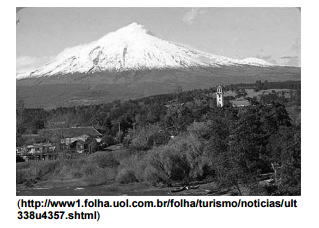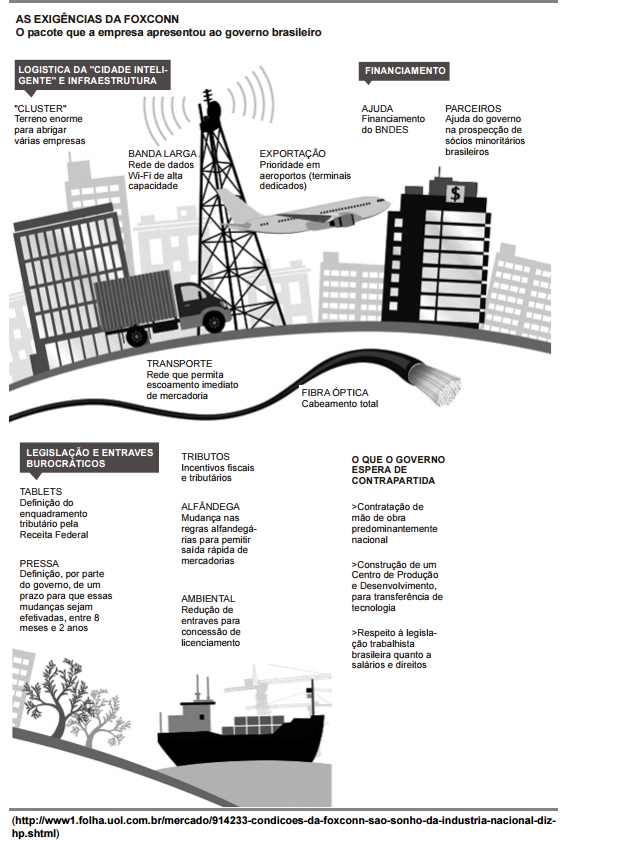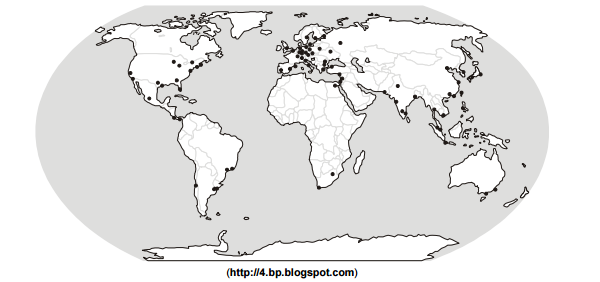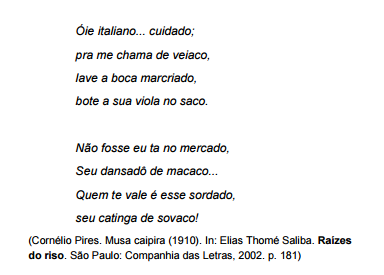Duas partículas elétricas carregadas positivamente estão fixas sobre um eixo x nos pontos A e B, conforme a figura.

O campo elétrico resultante da presença dessas cargas
De acordo com a Proposta Curricular de Física/MG, o professor, ao elaborar seu plano de aula, deve atentar para
Leia o texto e observe a imagem a seguir.
O velocímetro corre, enquanto o retrovisor deixa para trás vilas de estilo europeu, vulcões com neve eterna, lagos cercados de
florestas, fiordes e cachoeiras. A expedição mal começou, mas uma pergunta insiste em rondar a cabeça: como um país tão
estreito como o Chile consegue reunir tão fascinante diversidade?

A diversidade destacada no texto está relacionada
Observe a imagem.

Com base no conteúdo da imagem, o professor de Geografia pode abordar, junto aos alunos do Ensino Fundamental, o tema
Observe a imagem a seguir, que destaca as exigências feitas pela multinacional Foxconn para a produção de "Tablets" no Brasil.

Com base no conteúdo da figura, está correto afirmar que
Observe o mapa a seguir.

Os pontos assinalados no mapa representam um importante grupo de cidades que conformam uma rede e são denominadas
Em Lagoa Santa — município da região metropolitana de Belo Horizonte — foram localizados inúmeros achados arqueológicos, entre eles o fóssil conhecido por Luzia, um dos mais antigos da América. Esse achado contribuiu para a formulação de novas teorias sobre a ocupação do atual território brasileiro. Conteúdos como esse, em sala de aula, permitem
Leia o poema a seguir.

Este poema, escrito em linguagem coloquial, pode ser utilizado em sala de aula para trabalhar conteúdos relacionados
O texto trata de uma crise que, direta ou indiretamente, atingiu todo o mundo capitalista. No Brasil, ela repercutiu de forma significativa, pois, com a recessão,
Analise o gráfico e observe a imagem.

A partir da análise do gráfico e da imagem está correto afirmar que no Brasil, no período do regime militar, a
Os dois gráficos abaixo registram as medidas das taxas diárias dos hormônios luteinizante (LH), folículo estimulante (FSH), estrógeno e progesterona, no sangue de uma mulher adulta, em idade fértil, durante 28 dias consecutivos.
A partir da análise dos gráficos, está correto concluir que em I ocorreu
Attention: Read the text and answer questions 21 to 29.
A Writer's Beginnings in Kenya By ALEXANDRA FULLER
ONE DAY I WILL WRITE ABOUT THIS PLACE
A Memoir By Binyavanga Wainaina 256 pp. Graywolf Press. $24.
Dear reader, I'll save you precious time: skip this review and head directly to the bookstore for Binyavanga Wainaina's stand-upand-cheer coming-of-age memoir, "One Day I Will Write About This Place." [CONNECTIVE] written by an East African and set in East and Southern Africa, Wainaina's book is not just for Afrophiles or lovers of post-colonial literature. This is a book for anyone who still finds the nourishment of a well-written tale preferable to the empty-calorie jolt of a celebrity confessional or Swedish mystery. Not that Wainaina is likely to judge [PRONOUN] taste in books. In fact, at its heart, this is a story about how Wainaina was almost [TO EAT] alive by his addiction to reading anything available. "I am starting to read storybooks," he says of his 11-year-old self, growing up in Nakuru, Kenya. "If words, in English, arranged on the page have the power to control my body in this world, this sound and language can close its folds, like a fan, and I will slide into its world, where things are arranged differently." As he leaves childhood [ADVERB 1] − "My nose sweats a lot these days, and my armpits smell, and I wake [ADVERB 2] a lot at night all wriggly and hot, like Congo rumba music" − Wainaina retreats further from the confusing realities of politics and adolescence and his big multinational family (his father a Kenyan businessman and farm owner, his mother a Ugandan salon owner) and deeper into a world of words. At school he is told, and believes, that he is supposed to become a doctor or a lawyer, an engineer or a scientist. But Wainaina seems constitutionally incapable of absorbing anything that would further a career in these fields. By the time Wainaina leaves Kenya to attend university in South Africa, a country smoldering with the last poisonous fumes of apartheid, his addiction to books is complete. He drops out of school to pursue more completely a life of reading.
Adapted from http://www.nytimes.com/2011/08/14/books/review/one-day-i-will-write-about-this-place-by-binyavanga-wainaina-book-review.html?pagewanted=all)
Depreende-se que o autor do texto
If we turned off home computers when not in use, we KK down their CO2 impact by 50 percent.
Attention: For questions 53-60, read the text below and decide which answer (A, B, C or D) best fits each gap.
Saving energy: it starts at home We already know the fastest, 53 expensive way to slow climate change: use less energy. With a little effort, and not 54
money, most of us could reduce our energy diets by 25 percent or more − 55 the Earth a favor while also helping our pocketbooks.
So what's holding us back? Scientists have reported recently that the world is heating up even faster KK 56 predicted only a few years KK 57 , and that the
consequences could be severe if we don't KK 58 reducing emission of carbon dioxide and other greenhouse gases that are trapping heat in our atmosphere. But what can we KK 59 about it as individuals? Will our efforts really KK
60 any difference?
(Extracted from the National Geographic Magazine, March 2009)
Attention: For questions 53-60, read the text below and decide which answer (A, B, C or D) best fits each gap. Saving energy: it starts at home We already know the fastest, 53 expensive way to slow climate change: use less energy. With a little effort, and not 54 money, most of us could reduce our energy diets by 25 percent or more − 55 the Earth a favor while also helping our pocketbooks. So what’s holding us back? Scientists have reported recently that the world is heating up even faster KK 56 predicted only a few years KK 57 , and that the consequences could be severe if we don’t KK 58 reducing emission of carbon dioxide and other greenhouse gases that are trapping heat in our atmosphere. But what can we KK 59 about it as individuals? Will our efforts really KK 60 any difference? (Extracted from the National Geographic Magazine, March 2009)



